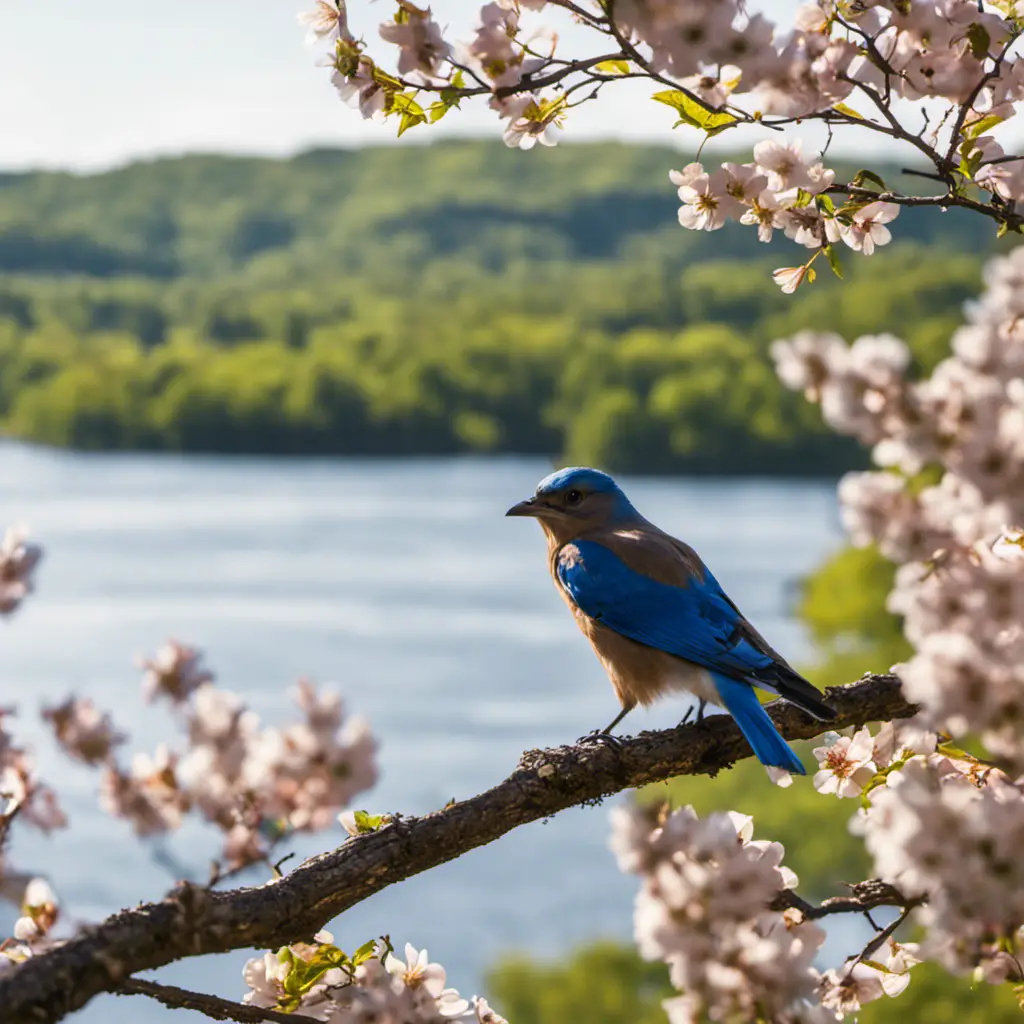Did you know that Connecticut is home to more than 300 different species of birds? Of those, nearly 60 can be seen throughout the year. In this blog post, we will take a look at some of the most common birds in Connecticut and discuss their habits and habitats.
Common Backyard Birds of Connecticut:
American Crow

American Crows are bird species that can be found in Connecticut. They are known for their distinctive red and white plumage, as well as their long tails. American Crows typically eat insects and small mammals. They can grow to be up to 16 inches in length and have a wingspan of up to 24 inches.
American Crows typically live in wooded areas near water. They are known for their loud calls, which can be heard up to a mile away. American Crows are generally shy birds, but they will become aggressive if they feel threatened.

Black-capped Chickadee – Poecile atricapillus

The Black-capped Chickadee is a small, North American songbird. It has a black cap and bib with white sides to its face. Its underparts are whitish, and it has dark gray wings and back.
The chickadee’s flanks are buffy, dark brown birds. This bird’s tail is relatively long and is usually held upright. Black-capped Chickadees are small birds, measuring only about 12.0–15.0 cm (about four to six inches) in length.
They typically weigh between 11 and 19 grams (about 0.39 to 0.67 ounces). These birds have a wingspan of 17–21 cm (about seven to eight inches).

Northern Cardinals – Cardinalis
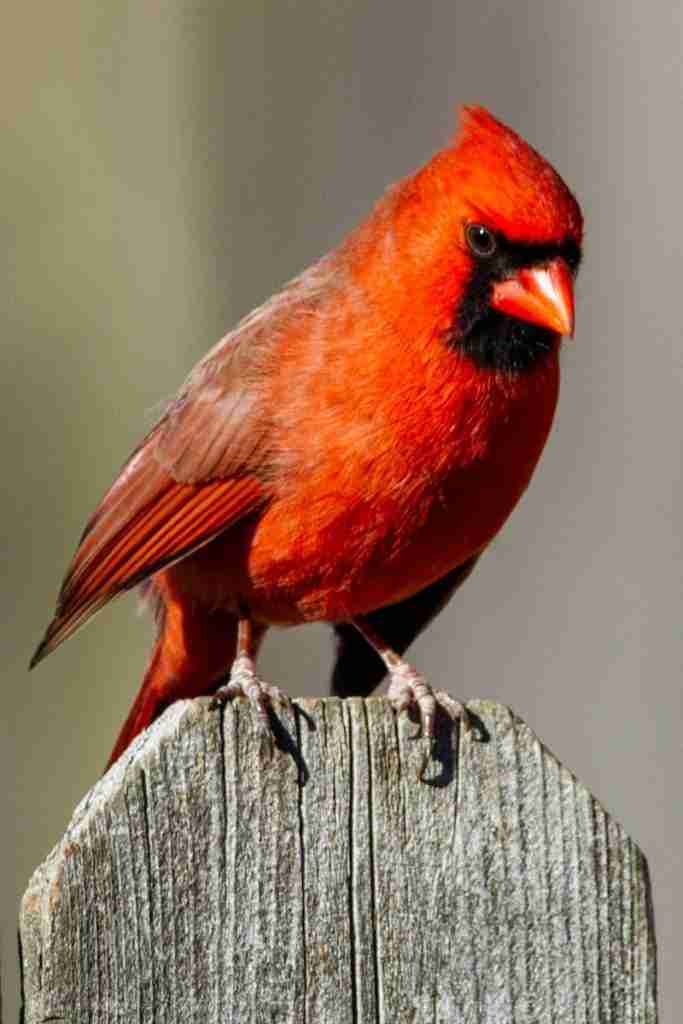
The Northern Cardinal is a North American bird in the genus Cardinalis and is also known as the common cardinal, redbird, or just cardinal. It can be found in southern Canada, through the eastern United States from Maine to Texas and south through Mexico.
The northernmost populations may move south during harsh winters. Cardinals are habitat generalists and are able to live in most types of North American habitats. They are found in woodlands, gardens, swamps, and deserts.
The Northern Cardinal is a medium-sized songbird with a body length of 21–23 cm (eight to nine inches) and a wingspan of 30–35 cm (12 to 14 inches). Cardinals are sexually dimorphic, meaning that the males and females have different plumage.
The male Northern Cardinal is vibrant red with a black mask that extends from its beak to its chest. It also has a red crest on top of its head. The female is mainly reddish-brown with some gray on her wings and tail. Both sexes have reddish bills and feet.

Dark-eyed Junco – Junco hyemalis
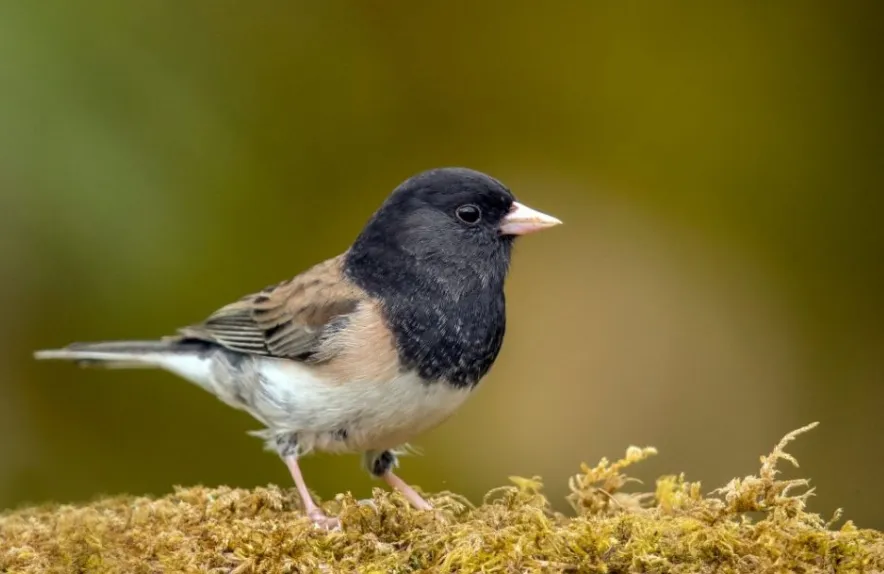
The Dark-eyed Junco is a small sparrow with a slate-gray back and white belly. They have a pink bill and legs, and brownish wings with two white bars. The males and females look similar, but the males usually have darker gray heads. These birds are about six inches long with a wingspan of eight to nine inches.
The Dark-eyed Junco is a common bird found in North America. They breed in the mountains from Alaska to Newfoundland, and winter as far south as Mexico. In Connecticut, they can be found year-round in wooded areas, especially near streams or other sources of water.
These birds eat mostly insects and black oil sunflower seeds. In the summer, they eat insects such as beetles, ants, and caterpillars. In the winter, when insects are scarce, they eat more seeds from plants like alder, birch, and willow.

American Robin – Turdus migratorius
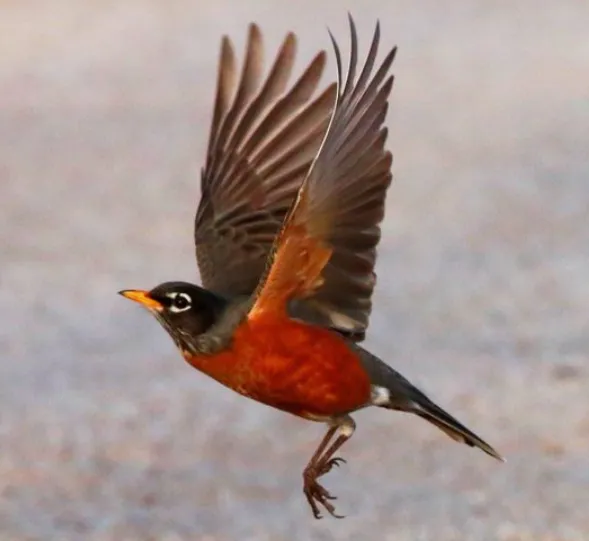
The American Robin is a migratory songbird that breeds across much of North America. Robins are easily identified by their orange breast and gray back. These birds are also known for their loud, melodious songs which they often sing while in flight.
Robins are mostly insectivorous but will also eat berries and fruits. They forage on the ground, using their long legs and sharp claws to dig for food.
American Robins are about 16 cm in length with a wingspan of around 30 cm. Males and females look similar, although the males tend to be slightly larger.
During the breeding season, American Robins are found in open woodlands, forests, and gardens. In winter, they move to more open areas such as parks and golf courses.

Red-bellied Woodpecker – Melanerpes carolinus
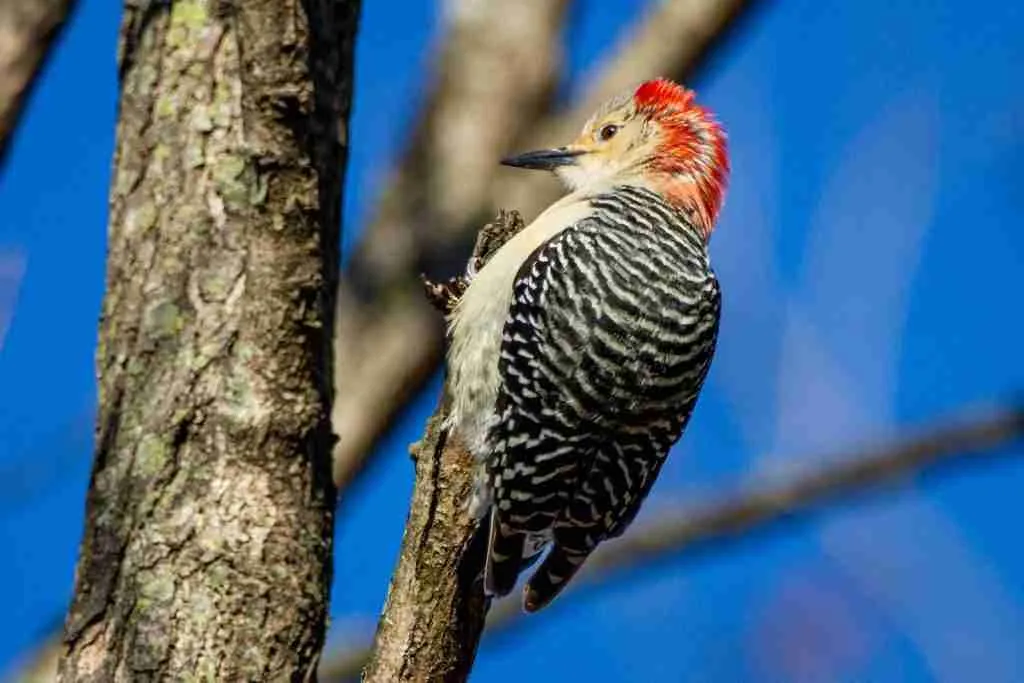
The Red-bellied Woodpecker is a medium-sized woodpecker with a black back, white underparts, and a red cap. Adults have a white chin and throat. The bill is chisel-shaped and black. The male has a red streak down the center of his belly, while the female has a more limited red area on her lower belly.
Red-bellied Woodpeckers are found in woodlands and forests throughout the eastern United States. They prefer deciduous trees, but will also use pine and other evergreens. These birds forage on trees, picking insects from the bark or drilling holes to get at hidden prey.
They also eat fruits and nuts. Red-bellied Woodpeckers are cavity nesters, using both natural cavities and man-made birdhouses. They often nest in pairs, but will sometimes form small colonies. These woodpeckers are active during the day and can often be seen climbing tree trunks in search of food.
They are also known to visit backyard bird feeders. Red-bellied Woodpeckers are not currently considered to be at risk. However, habitat loss and fragmentation may pose a threat to these birds in the future.

House Finch
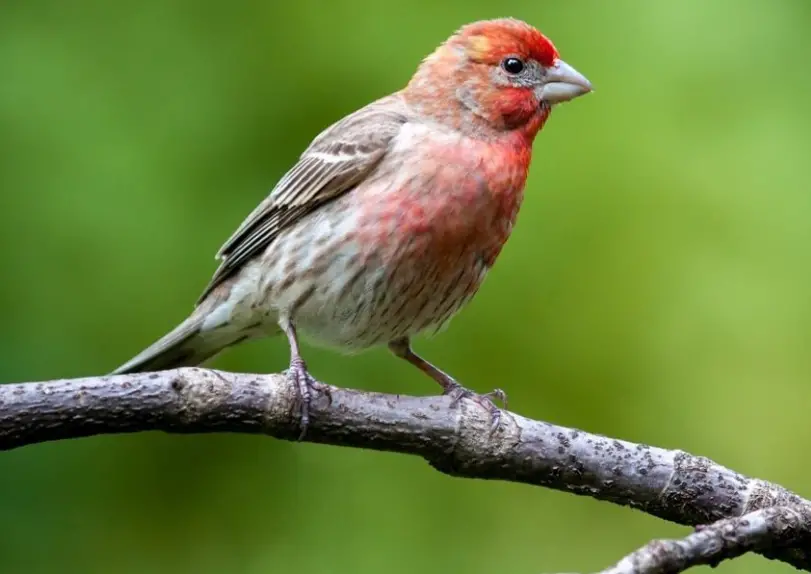
The house finch is a small bird, measuring only about five to six inches in length. The male house finch has red feathers on its head, breast, and back, while the female usually has duller colors. Both sexes have brownish streaking on their wings and tail.
Juvenile birds look similar to adults, but with darker plumage. The house finch is found in North and South America, and its diet consists mostly of seeds, berries, and insects.
The house finch prefers to live in open woodlands, but can also be found in urban areas. These birds build their nests out of twigs and leaves, and often lay three to six eggs.
The female house finch does all the incubating, while the male brings food to her. Once the chicks hatch, both parents help feed them. After about two weeks, the young birds are able to fly and leave the nest.

Downy Woodpecker
(Picoides pubescens)
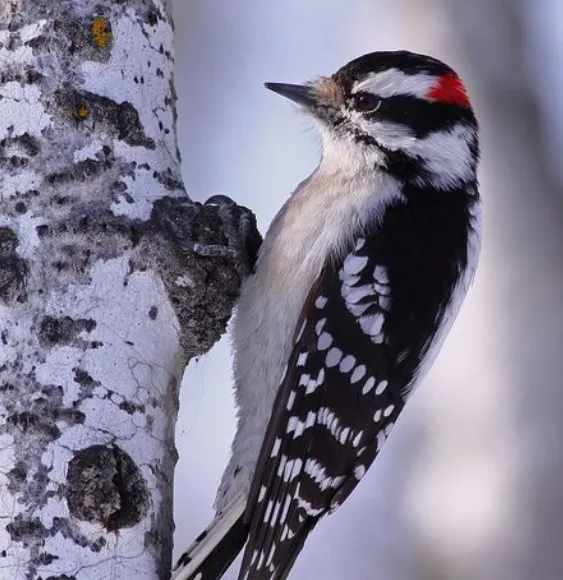
The Downy Woodpecker is the smallest woodpecker in North America, measuring just six to seven inches in length. It has a black back and wings with white bars, a black cap, white throat and cheeks, and a small bill. Its diet consists of insects which it finds by drilling holes into tree bark. It is a common bird found in woodlands throughout Connecticut.
It is most active during the day and can often be seen climbing tree trunks in search of food. It nests in holes drilled into trees and will often reuse the same hole year after year.
The Downy Woodpecker is a vocal bird, with a variety of calls including a sharp “pik” sound that it uses to announce its presence to other birds. It is also known for the drumming noise it makes by rapidly pecking its beak against tree trunks. This behavior is used to attract mates and establish territories.

American Goldfinch
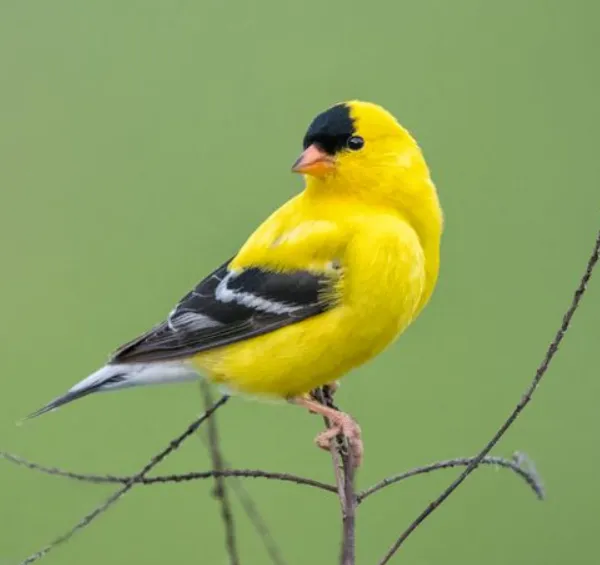
The American Goldfinch is a small finch with a yellow body and black wings. The male has a black cap, while the female has a brown cap. They are found in open woodlands and fields across North America. These social birds often travel in flocks and build their nests together.
Their diet consists of seeds, insects, and berries. They are small birds, measuring only about four inches in length. The American Goldfinch is a beautiful bird that is fun to watch and photograph.

House Wren – Troglodytes aedon
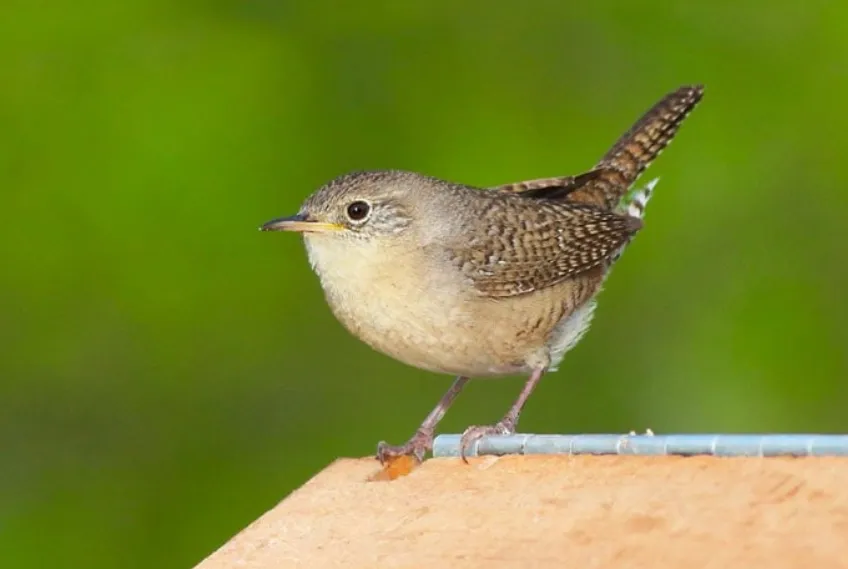
The house wren is a small songbird with a brown back and wings, light belly, and white throat. They have a long tail that they often hold upright. Males and females look alike. This bird is found in North and South America.
House wrens are found in open habitats such as fields, parks, and yards. They build their nests in small cavities, such as holes in trees, nest boxes, and even old shoes! These birds eat insects, spiders, and other small invertebrates.
House wrens are very active birds. They are constantly moving around, looking for food or a mate. Their loud singing can often be heard in the early morning hours. These birds are not afraid of humans and will often approach people if they think there is food available.

Tree Swallow – Tachycineta bicolor

The Tree Swallow is a small songbird of the swallow family. It measures 16–18 cm (
Tree Swallows are found in open habitats including marshes, meadows, and farmland with trees nearby. They nest in tree cavities or nest boxes and eat flying insects which they catch in flight.
During the nesting season, which runs from late April to early August, the male Tree Swallow will perform a spectacular courtship display in which he will fly high above the female while twittering. The pair will then dive steeply towards each other before breaking apart at the last moment.
The Tree Swallow is a monogamous bird and will usually mate for life. The female will lay a clutch of four to seven eggs which hatch after about two weeks. The young birds leave the nest after another three weeks.
The Tree Swallow is one of the earliest migrating songbirds, with some birds leaving as early as August. It winters in Central and South America.

Cedar Waxwing – Bombycilla cedrorum
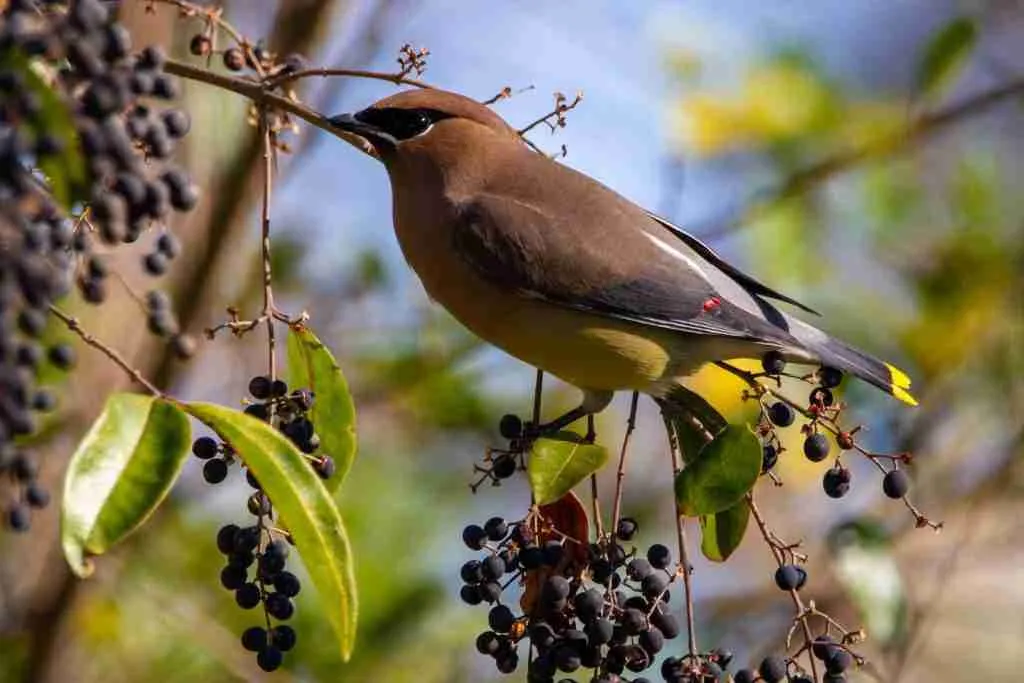
The Cedar Waxwing is a medium-sized, stout-bodied songbird with a relatively long tail. Adults have black masks that extend from their beaks to just below their eyes, and black tips on their otherwise grayish-brown wings. The belly and undertail coverts are pale yellow, and the tail is usually tipped with red.
This bird gets its name from the red, waxy secretions of the tips of its wing feathers. Cedar Waxwings are social birds that often travel in flocks of up to 100 individuals.
These birds breed in open woodlands and forests across much of North America. Their diet consists primarily of fruits and berries, but they will also eat insects and nectar. Cedar Waxwings will sometimes “gulp” berries whole, which can lead to indigestion and even death if too many are consumed.
These birds are typically about 12 cm long with a wingspan of 20 cm. They weigh between 15 and 20 g.
Cedar Waxwings generally nest in trees, often near the edge of a forest. The female builds the nest by herself, using twigs, grasses, and other plant materials. She lays between three and eight eggs, which are incubated for 12-14 days. Both parents feed the young birds until they are old enough to fend for themselves.

Red-eyed Vireo – Vireo olivaceus

The red-eyed vireo is a small songbird with olive upperparts and white underparts. It has a black head with a white eye-ring, and gray legs and feet. This bird can be found in woodlands across North America.
The red-eyed vireo eats insects, spiders, and berries. It forages for food in trees and bushes.
The red-eyed vireo is about five inches long. It has a wingspan of about eight inches.
The red-eyed vireo breeds in deciduous and mixed forests across North America. It nests in trees or shrubs, often near the ground.

Red-winged Blackbird – Agelaius phoeniceus
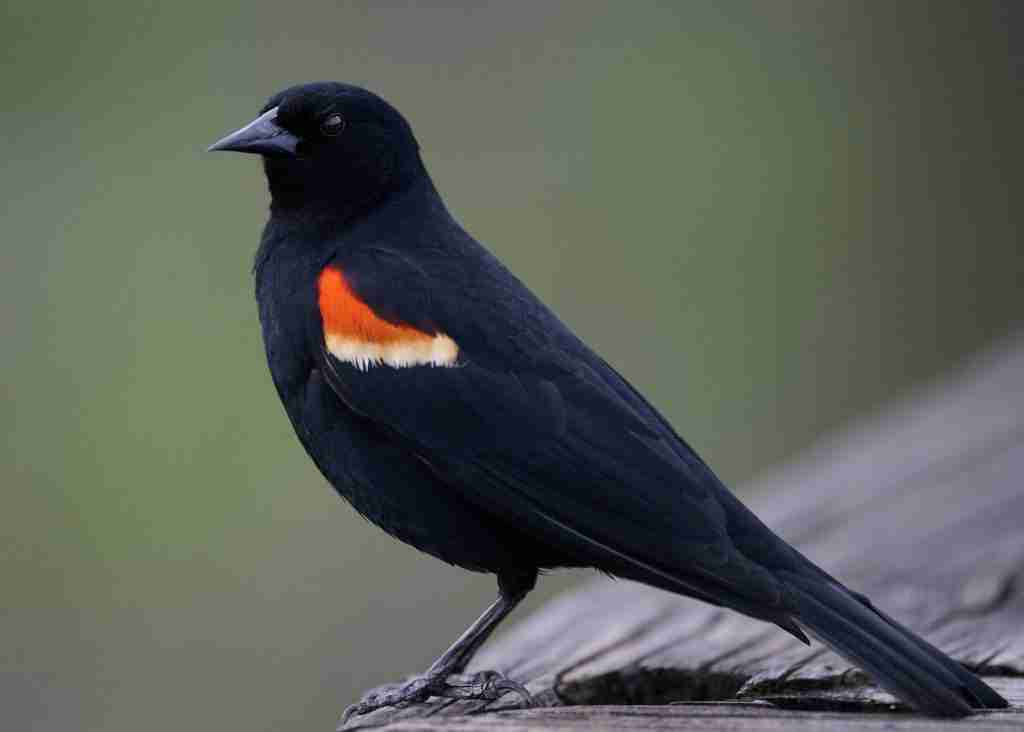
The red-winged blackbird is a medium-sized blackbird with striking red and yellow markings on its wings. Males have a black body with glossy greenish-black feathers on their back and head. Their wing shoulders are bright red, and they have a large yellow patch on their primaries (flight feathers). Females are much duller, with a brownish body and streaked black and brown wings. Both sexes have red eyes.
These birds are found in open habitats across North America, including marshes, wetlands, fields, and roadside ditches. They forage on the ground for insects, seeds, and berries. In the winter they often form large flocks and can be seen in open areas feeding on grains.
Red-winged blackbirds are very territorial, and the males will aggressively defend their nesting territories from other birds and animals. They nest in marshes and wetlands, often building their nests in cattails or reeds. The female builds the nest alone, using grasses, twigs, and leaves.
She lays a clutch of three to five eggs, which are incubated for 12-14 days. Both parents help care for the young birds, which fledge (leave the nest) after about two weeks.

Song Sparrow
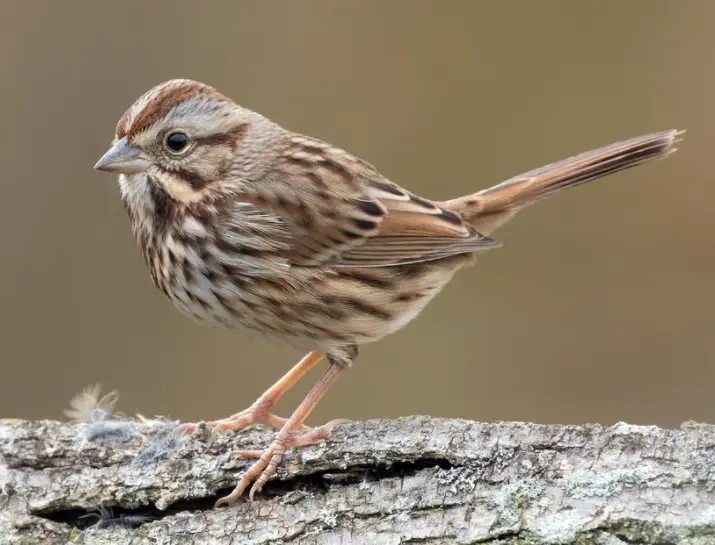
Song Sparrows are one of the most widespread birds in North America. You can find them in nearly every habitat, from forests to fields to urban areas. They range in size from about five to six inches long and have a wingspan of eight to ten inches.
Song Sparrows are brownish-gray above with light streaks on their back and wings. Their belly is white with heavy dark streaks. They have a gray breast with a brownish-streaked throat. Their face is gray with a brown streaked eyebrow and they have a white line above their bill.
Song Sparrows eat mostly insects and seeds. In the summer, their diet consists of mostly insects such as beetles, grasshoppers, and caterpillars. In the winter, they eat mostly seeds from plants such as grasses, sedges, and forbs.

Pine Siskin – Spinus pinus
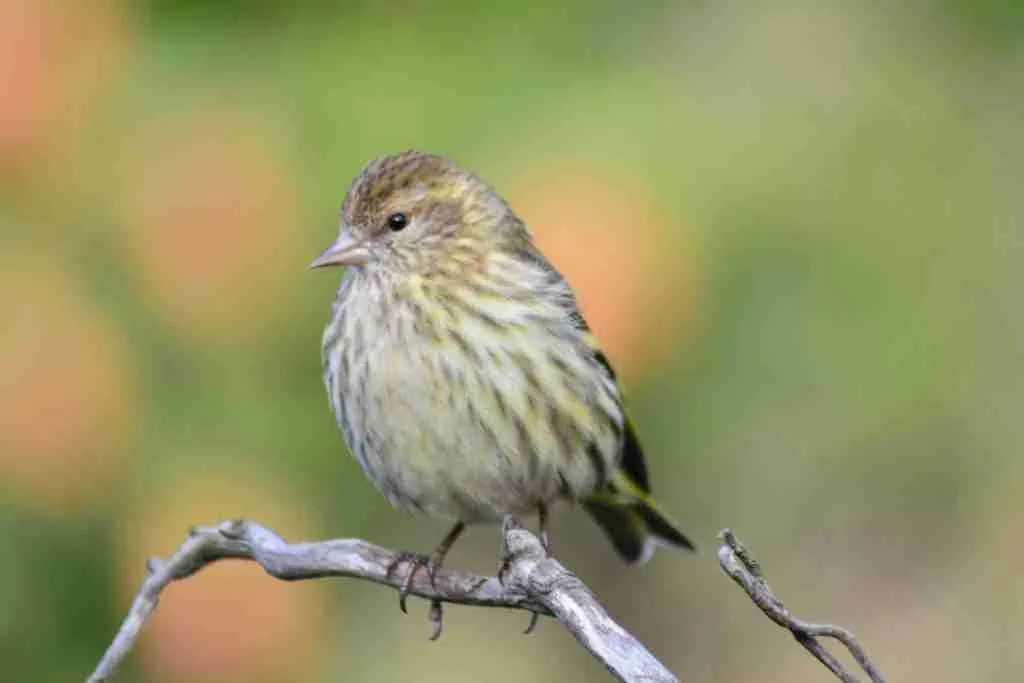
The Pine Siskin is a small finch with a slender bill. The adult has pale brown upperparts, streaked with darker brown; the wings are brown with two white bars. The underparts are pale yellow, streaked with brown on the breast and sides. The Pine Siskin is one of our smaller winter finches, and is often found in small flocks foraging actively in trees and shrubs.
These birds mainly eat seeds, but will also consume insects, especially in the summer. The Pine Siskin breeds across much of Canada and the northern United States; it winters as far south as California, Texas, and Florida.

Mourning Dove – Zenaida macroura
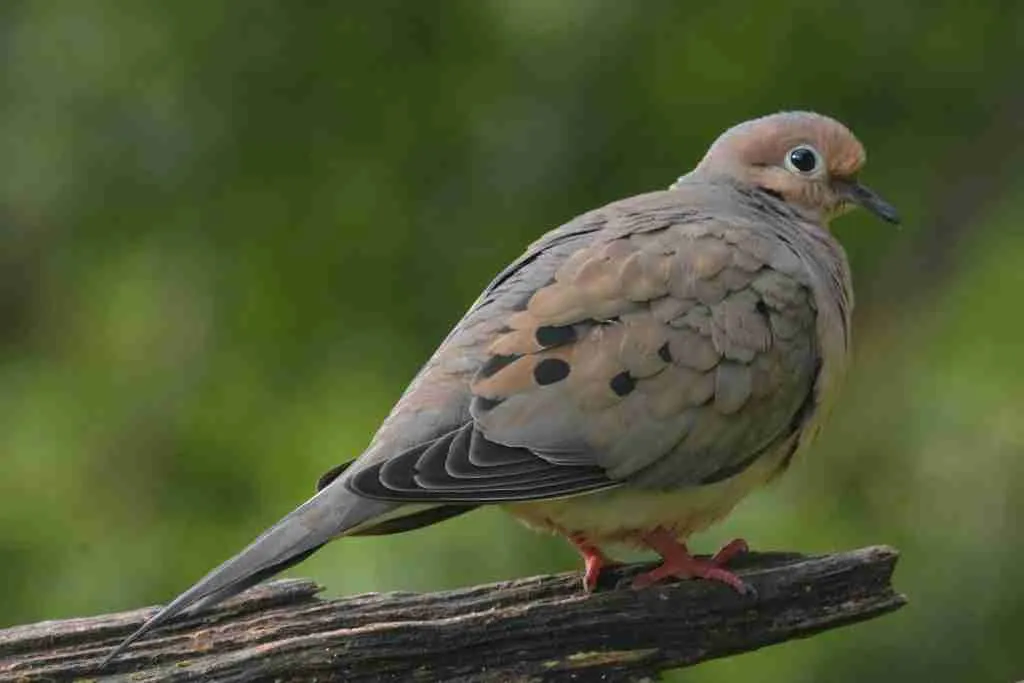
The Mourning Dove is a medium-sized, slender dove with a long, pointed tail. Its back is grayish brown, and the wings are pale gray with black spots. The breast and belly are pinkish buffs. The head is gray with a black bill. The eyes are red. It measures 12-14 inches in length and has a wingspan of 20-24 inches.
The Mourning Dove is found in open habitats such as fields, meadows, and prairies. It feeds on seeds, fruits, and insects. The Mourning Dove nests in trees or shrubs, laying two white eggs.
The Mourning Dove is a calm and gentle bird. It is shy and easily frightened. When alarmed, it will fly away with a sharp, whistling call. The Mourning Dove is active during the day and roosts at night. It is a monogamous bird, mating for life.Both parents care for the young.

Blue Jay – Cyanocitta cristata
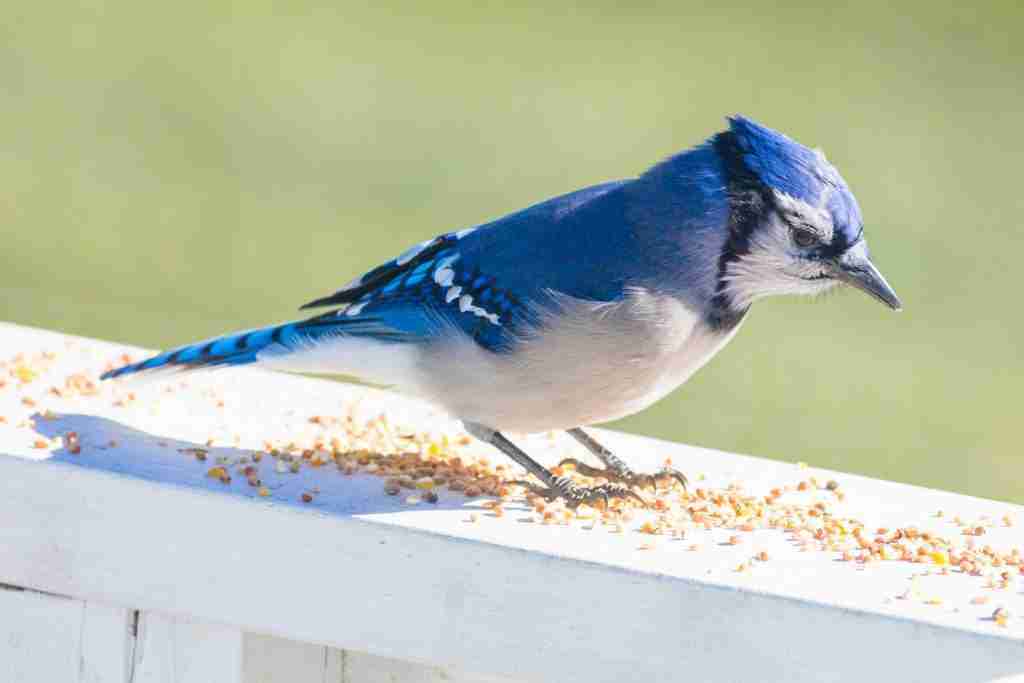
The Blue Jay is a songbird of the crow family. It is native to North America and ranges from southern Canada to northern Mexico. The adult male has a blue body with a white chest and head. The female is similar in plumage, but she tends to have grayish-brown upperparts and a light gray breast.
Blue Jays are noisy and aggressive birds. They are known to make a wide variety of sounds, including mimicry of other birds. Blue Jays often form flocks with other jays and mixed species flocks.
They are highly social birds and will defend their territories aggressively. Blue Jays typically eat insects, acorns, fruits, and nuts. The bird pictured above is a Blue Jay.

European Starlings
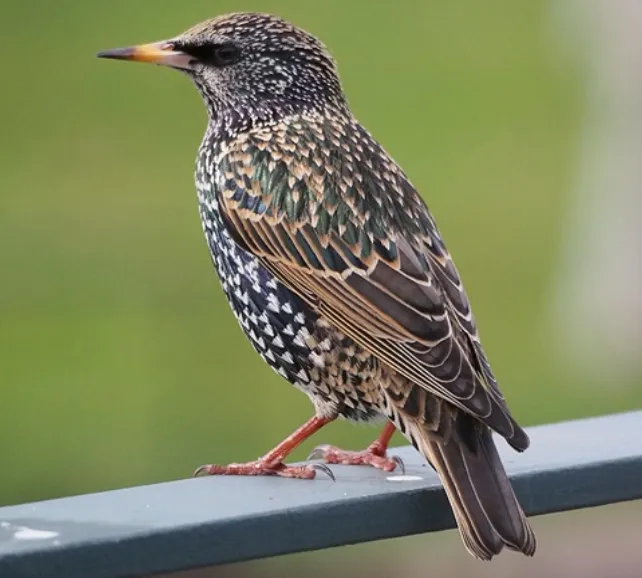
European Starlings are small to medium-sized birds with short necks and legs. They have black feathers with iridescent green, blue, or purple plumage. Their bills are short and triangular. European Starlings eat insects, fruits, and berries. They live in open woodlands, fields, and gardens.
European Starlings are social birds that often form large flocks. They are known for their vocalizations and mimicry. European Starlings are considered to be nuisance birds in some areas because of their large flocks and aggressive behavior.

White-breasted Nuthatch
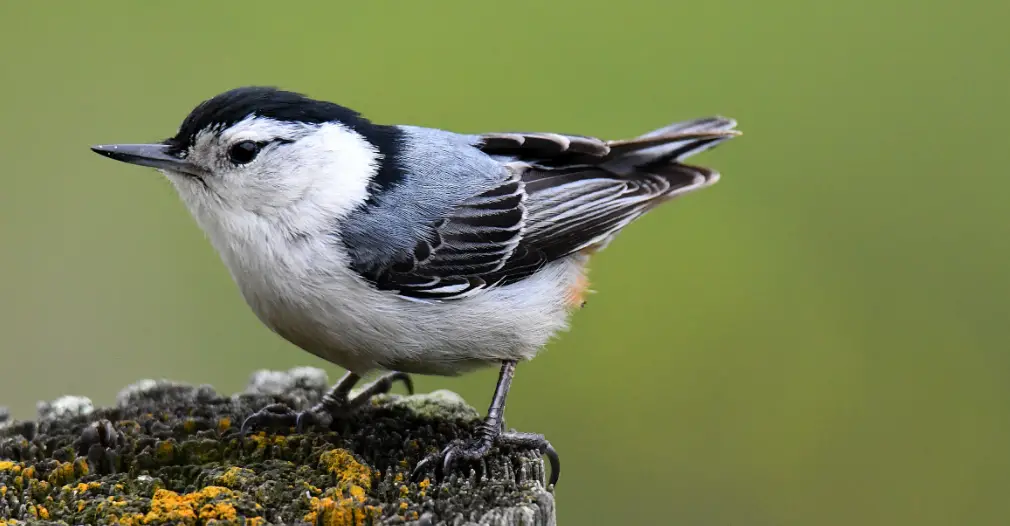
White-breasted Nuthatch is a small songbird with a large head, short tail, and strong feet. The back is blue-gray, and the underparts are white. There is a black stripe on the face that extends from the bill to behind the eye. White-breasted Nuthatches eat insects and seeds. They often hang upside down while eating.
White-breasted Nuthatches nest in trees. They make a nest of twigs, leaves, and grass. White-breasted Nuthatches are found in woods and forests. They are often seen climbing up and down tree trunks.
White-breasted nuthatches are year-round residents in Connecticut. They are most easily seen and heard in the spring and summer when they are actively nesting. However, they can be seen and heard throughout the year if you know where to look and listen for them.
Look for white-breasted nuthatches near the top of trees, searching for food or building their nests. Listen for their distinctive “yank-yank” call. With a little practice, you will be able to identify this common bird by its appearance, call, and behavior.

Tufted Titmouse
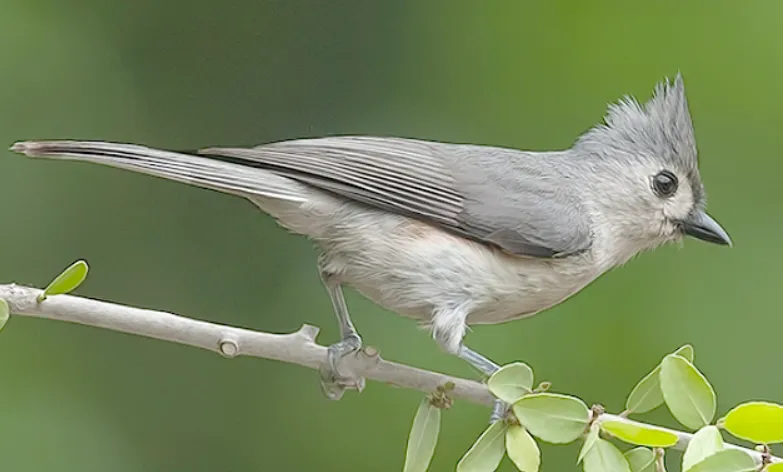
Tufted Titmouse is a small songbird with gray upperparts and white underparts. It has a black cap and bib, white cheeks, and a long, black tail. Its bill is black, and its legs and feet are gray. This bird is found in woodlands throughout the eastern United States. It feeds on insects, berries, and seeds.
The Tufted Titmouse is a small bird, measuring about five and a half inches in length. It has a wingspan of eight to nine inches. This bird is found in woodlands throughout the eastern United States. It feeds on insects, berries, and seeds.
The Tufted Titmouse nests in tree cavities or nest boxes. These birds are social, and often form flocks with other small birds. They are also known to visit bird feeders. The Tufted Titmouse is a non-migratory bird.

House Sparrows
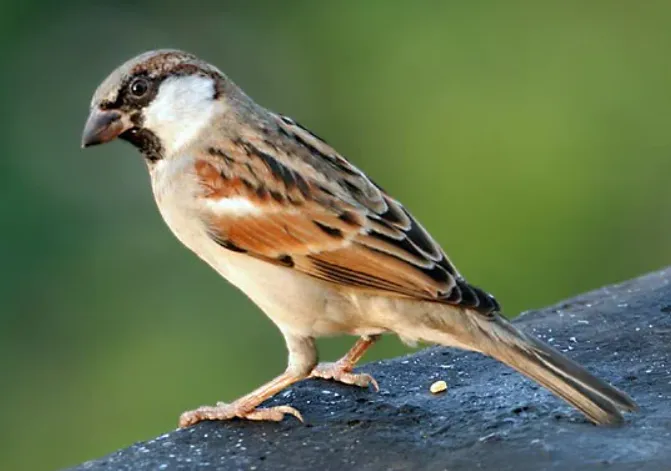
House Sparrows are small birds with brown upperparts and gray underparts. They have a black stripe on their throat and a white outer edge on their tail feathers. Their bill is short and stout, and they have pinkish legs.
House Sparrows eat mostly seeds, but they will also eat insects. They forage on the ground in open areas, often near human habitation.
House Sparrows are about six inches long and weigh one ounce. They have a wingspan of eight to ten inches.
House Sparrows live in open areas near human habitation, such as fields, parks, and suburban neighborhoods. They build their nests in trees, shrubs, or man-made structures.
House Sparrows are social birds that often form large flocks. They are active during the day and typically roost at night in trees or man-made structures. House Sparrows are not migratory birds.

What are common birds in Connecticut?
The most common birds in Connecticut are American robins, mourning doves, and house finches. However, there are many other types of birds that can be found in the state, including bald eagles, peregrine falcons, and ospreys. With so many different types of birds, it is no wonder that Connecticut is a popular destination for birdwatchers.
How many species of birds are there in Connecticut?
There are over 170 species of birds that have been recorded in Connecticut. However, the actual number is likely higher because new species are being discovered all the time.
The state is home to a variety of different habitats, which makes it a great place for bird watching. Whether you’re in the woods or at the beach, you’re sure to see some interesting birds.
What birds stay for the winter in CT?
There are quite a few birds that stick around in Connecticut during the winter months! Some of the more common ones include: American crows, black-capped chickadees, blue jays, cardinals, downy woodpeckers, juncos, nuthatches, and red-tailed hawks.
Are there house finches in Connecticut?
The answer to this question is a little complicated. House finches are not native to Connecticut, but they have been introduced to the state and can be found in some areas. However, their populations are not well-established and they are not commonly seen. So while it is possible to find house finches in Connecticut, they are not particularly common.
Winter Birds in Connecticut:
There are quite a few birds that stick around in Connecticut during the winter months! Some of the more common ones include: American crows, black-capped chickadees, blue jays, cardinals, downy woodpeckers, juncos, nuthatches, and red-tailed hawks.

An avid ornithologist, zoologist and biologist with an unwavering passion for birds and wild animals.
Dr. Wilson’s journey in ornithology began in childhood and led him to obtain a Ph.D. in Ornithology from the prestigious Avian Research Institute. He has worked closely with renowned experts in the field and conducted extensive research and field studies globally.

